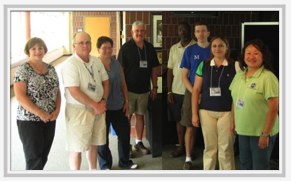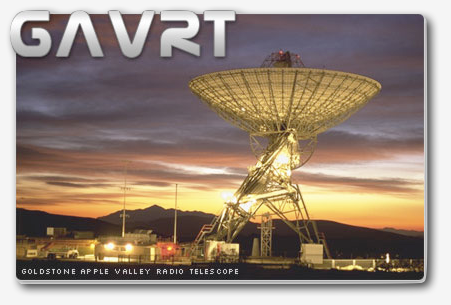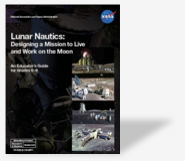Each summer, NASA Explorer Schools recognizes outstanding NES educators by providing an opportunity to attend an all-expense-paid, three- to five-day research experience. This summer, NES is hosting four research experiences.
On July 11, selected educators begin a week-long NASA Coastal Ocean Research Opportunity. Teachers become familiar with the science and research techniques used by NASA to study the coastal oceans, ocean color and Earth’s biosphere from space. They conduct research aboard research vessels and learn to use some of the same techniques used by NASA scientists.
The theme of the Solar System – Inside and Out summer experience is what is happening within our solar system and beyond. During this two-day professional development experience participants learn about our solar system, exoplanets, and the Hubble Space Telescope’s contributions to the study of these new worlds orbiting other stars. This workshop features science content presentations and hands- on activities that use real-world astronomical data and the Hubble Legacy Archive to bring the wonders of the universe to students. These activities can be implemented in the classroom to encourage students to generate relevant and meaningful research questions and search for new insights about the solar system. The “Solar System — Inside and Out” workshop will be held July 20-21, 2011, at the Space Telescope Science Institute, located on the Johns Hopkins University Homewood Campus in Baltimore, Md.
July 20 marks the first day of a four-day Water Filtration Research experience supporting the NES Engineering Design Challenge of the same name. Participants learn how NASA recycles water on the International Space System and about hydroponics and plant growth, as well as how a national park studies water.
A selected group of NES educators travel to the Goldstone Apple Valley Radio Telescope facility for a week-long research experience beginning on July 18. The GAVRT project uses a series of dedicated 34 meter (112 foot) radio telescopes at NASA’s Deep Space Network Goldstone Complex connected to classrooms via the Internet. Teachers acquire the curricular, operational and scientific knowledge to implement GAVRT within the classroom with cross-curricular lessons. Participants learn how to use the software. They are given access to the telescope for student use during the school year.
The final NES summer research experience, Forces and Motion, begins on August 1 and targets teachers of middle school students. Selected educators perform their own research on the properties of objects in a microgravity environment and then go through a design process to create and build a research experiment. The experience then culminates with testing the experiment in a NASA drop tower.
If you’d like to be eligible to participate in a NASA research experience next summer, become an NES participant by completing the registration form on the NES Virtual Campus.
Link to the NES Virtual Campus home page.
 During the week of July 18, 2011, eight NASA Explorer Schools educators from across the country attended the Solar System Inside and Out research experience at the Space Telescope Science Institute in Baltimore, Md.
During the week of July 18, 2011, eight NASA Explorer Schools educators from across the country attended the Solar System Inside and Out research experience at the Space Telescope Science Institute in Baltimore, Md.
 Ten NASA Explorer Schools educators participated in the project’s Water Filtration Research Summer Opportunity at NASA’s Marshall Space Flight Center in Huntsville, Ala. The workshop took place from July 20-22, 2011.
Ten NASA Explorer Schools educators participated in the project’s Water Filtration Research Summer Opportunity at NASA’s Marshall Space Flight Center in Huntsville, Ala. The workshop took place from July 20-22, 2011. From July 18-22, 2011, 12 NASA Explorer Schools educators participated in the NES Goldstone Apple Valley Project located at the Lewis Center in Apple Valley, Calif.
From July 18-22, 2011, 12 NASA Explorer Schools educators participated in the NES Goldstone Apple Valley Project located at the Lewis Center in Apple Valley, Calif. From July 11-15, 2011, fourteen highly enthusiastic educators participated in the NES Coastal Observation Research Experience at NASA’s Wallops Flight Facility, located at Wallops Island, Virginia.
From July 11-15, 2011, fourteen highly enthusiastic educators participated in the NES Coastal Observation Research Experience at NASA’s Wallops Flight Facility, located at Wallops Island, Virginia. NASA Explorer Schools is kicking off the 2011-2012 school year with the very first electronic professional development Web seminar — Lunar Nautics. The event takes place on July 21, 2011, at 9:30 a.m. EDT. It highlights three featured lessons from the Lunar Nautics educator guide, one of the most popular NES middle school teaching materials:
NASA Explorer Schools is kicking off the 2011-2012 school year with the very first electronic professional development Web seminar — Lunar Nautics. The event takes place on July 21, 2011, at 9:30 a.m. EDT. It highlights three featured lessons from the Lunar Nautics educator guide, one of the most popular NES middle school teaching materials: On July 15, NASA’s ion-propelled Dawn probe became the first spacecraft to enter orbit around a main-belt asteroid. Dawn will orbit Vesta for one Earth-year, studying the giant space rock at close range to help scientists understand the earliest chapter of our solar system’s history.
On July 15, NASA’s ion-propelled Dawn probe became the first spacecraft to enter orbit around a main-belt asteroid. Dawn will orbit Vesta for one Earth-year, studying the giant space rock at close range to help scientists understand the earliest chapter of our solar system’s history.